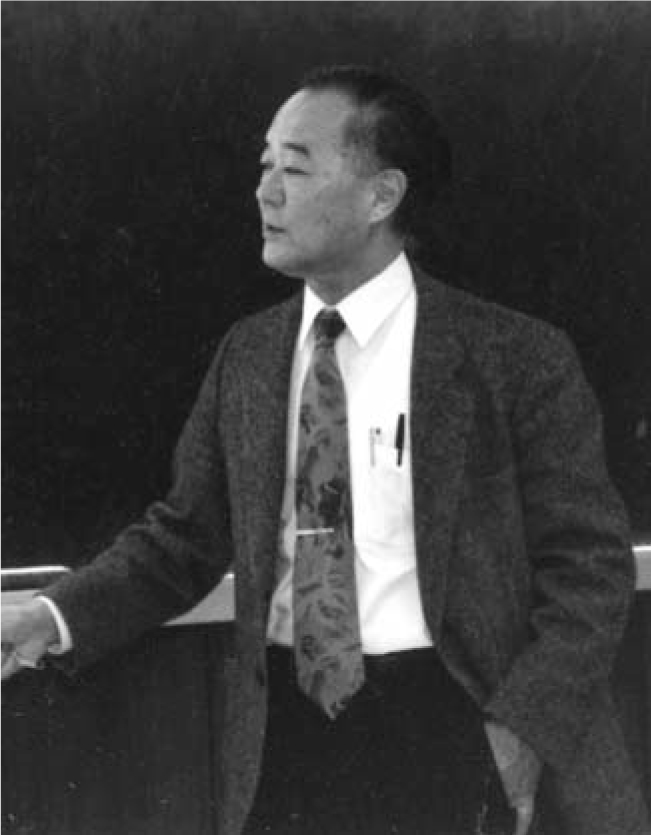Kazuhiko Nishijima
DOI: 10.1063/1.3206100
Kazuhiko Nishijima, a celebrated theoretical physicist who made significant contributions to the early development of particle physics, passed away from leukemia on 15 February 2009 in Tokyo.
Born on 4 October 1926 in Tsuchiura, Japan, Nishijima studied physics at the Imperial University of Tokyo right after World War II and in 1948 obtained his diploma. In 1955 he earned a doctor of science degree from Osaka University for his thesis on the nuclear potential. It was the time when Sin-itiro Tomonaga, with his students and in competition with other physicists across the globe, was developing the renormalization theory at the University of Education (the predecessor of the University of Tsukuba), located near the University of Tokyo. Also at that time, researchers were discovering new particles in cosmic rays.
Nishijima began his career in 1950 as an assistant at the newly created Osaka City University, where I also got a position. I formed a theory group of five members. Nishijima, one of the youngest members, worked on theoretical problems related to strong interactions in quantum field theory and on the phenomenology of the strange, or V, particles to try to make sense of their general properties. His first paper on the particles, done in collaboration with me and other colleagues, was a hypothesis regarding pair production of strange particles, which explains, in terms of a weakly conserved quantum number, why each product has a long life. With his colleague Tadao Nakano, and independently of Murray Gell-Mann, Nishijima subsequently discovered what is now referred to as the NNG rule, Q = I3 + S/2 + B/2, relating the electric charge Q to strangeness S, isospin I3 , and baryon number B for hadrons then known. The rule led to predictions about the Ξ hyperon and paved the way for establishing the flavor SU(3) symmetry (by Gell-Mann and by Yuval Ne’eman) and eventually the quark model (by Gell-Mann and by George Zweig).
Nishijima’s papers on field theory caught the attention of Werner Heisenberg, who was working on a unified theory, and in 1956 Nishijima was invited to Göttingen, Germany, where he spent a year and a half. In 1958 he moved to the US. After staying for a year and a half at the Institute for Advanced Study in Princeton, New Jersey, he became a professor at the University of Illinois at Urbana-Champaign. His work during that period again ranged from phenomenological to formal and included a postulate of a massless pseudoscalar field to conserve chirality—essentially a nonlinear realization of spontaneously broken chiral symmetry—and a formulation of composite particles in field theory.
In 1966 Nishijima ended his wandering years and returned to his alma mater, the University of Tokyo. He established a particle theory group and began to nurture the second generation of particle theorists, but he also served in administrative positions. He was director of the Research Institute for Fundamental Physics at Kyoto University from 1986 to 1989, and from 1995 to 2005 he was the president of the Nishina Memorial Foundation, which promotes physics in Japan. In those capacities, he displayed political skill and foresight, strengthening his institutions and helping others to get proper funding. But he also continued to work until near his death on various subjects in particle theory, such as color confinement and noncommutative spacetime. Among the prizes and honors he received are the Nishina Memorial Prize, the Japan Academy Prize, and the Order of Culture of Japan.
I had the good fortune to be one of Nishijima’s oldest friends and colleagues. We called him Kaz, and we loved him for his gentle manners, broad-mindedness, and wisdom and for how he combined those qualities with sharp and witty comments and observations that did not hurt people but were to the point nevertheless—a sort of Wignerian Pauli-ism. Less known were his linguistic abilities. In a short period of time he mastered German and Italian to such a degree that he was able to give lectures in both.
I will end by quoting one of his witticisms. For a time at the University of Illinois, he shared his office with his close friend Rudolf Haag. Each frequently received students and collaborators, which disturbed the other. When Haag complained about it and tried to discuss a solution, Nishijima answered philosophically, “He whom it does not concern does not listen.”

Kazuhiko Nishijima
DEPT.OF PHYSICS, UNIVERSITY OF ILLINOIS AT URBANA-CHAMPAIGN/ESVA

More about the Authors
Yoichiro Nambu. University of Chicago, Chicago, Illinois, US .
